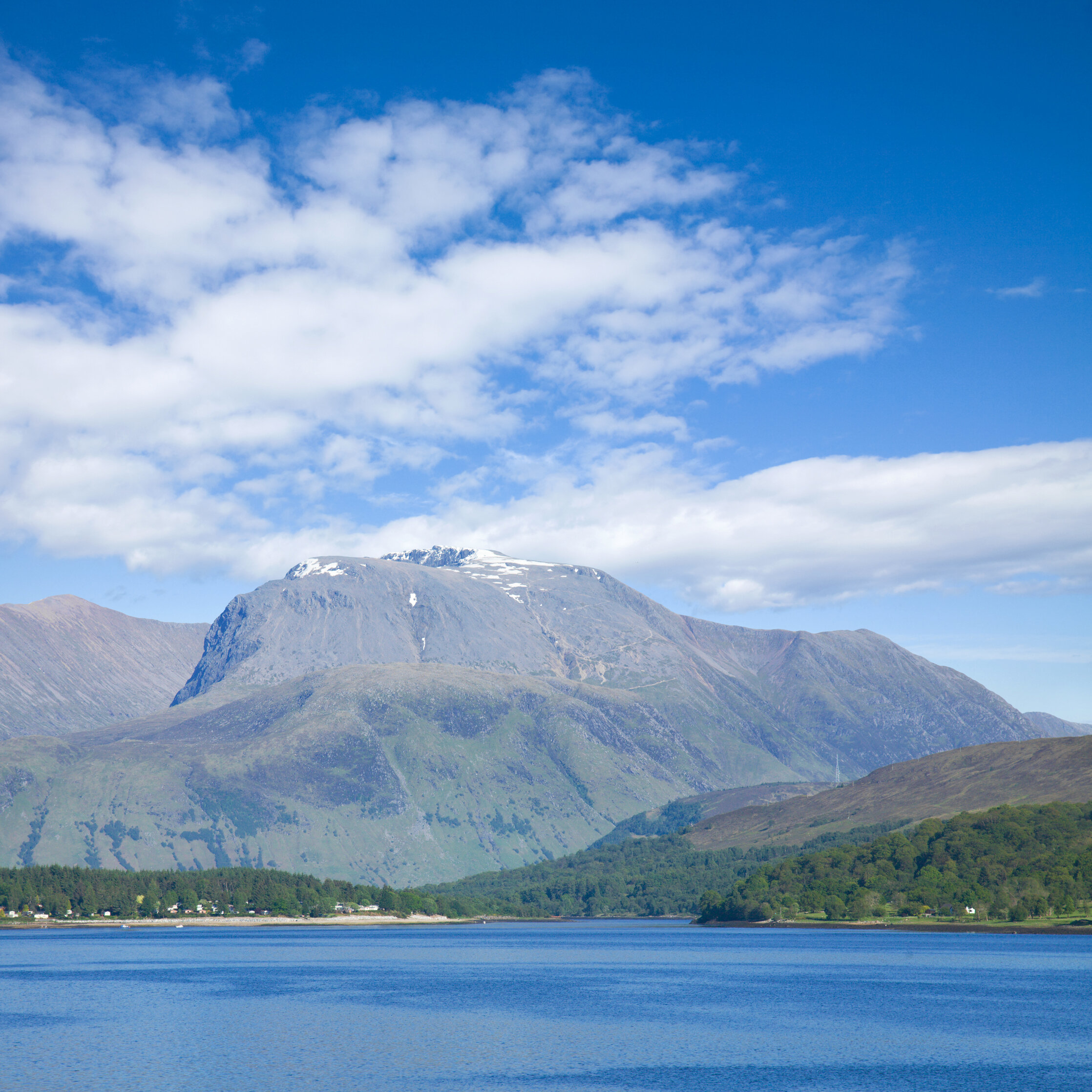A Guide to Walking Ben Nevis
If every country's highest point says something about them, then what does Ben Nevis say about the British? It's huge bulk, sitting on the coast, attracts so much bad weather there was an observatory built on the summit in the 19th century to monitor how Scotland's mountains affect it. The data gathered from this observatory, which ran for 20 years, greatly enhanced our understanding of mountain weather and is still relevant today.
It is a mountain which only lets you in slowly, where the weather changes fast and which keeps it's snow late into the summer. I've climbed Ben Nevis in June where the temperature was 30 degrees centigrade in the valley but there was still a metre of snow on the summit plateau. In the northern gullies, snow can linger all year, until the snows of the next winter begin. This is how ice ages start.
The mountain, also simply known as 'The Ben' to locals or anyone in the mountaineering world, presents very different aspects from wherever it is approached. The western and southern slopes are precipitous and have no routes, except for a way round from the south onto the adjacent peak of Carn Mor Dearg. Surgeon's Gully and Five Finger Gully in the west are where you end up if you navigate badly from the summit, frequently the destination of rescue parties.
The north face, famous the world over as a rock and ice climbing destination, is a spectacularly dramatic but fearsome aspect, every inch named and scored with the stories of long days out. This face of leaning buttresses and steep gullies is worth the walk into the bowl of Coire Leis or the nearby peaks just to look at it. On a good day you'll be able to spot climbers half way up the walls, their tiny coloured figures impossibly small against the black rock and white snow.
For walkers there are two main routes. The ascent of Carn Mor Dearg, leading to the ascent of Ben Nevis via the Carn Mor Dearg arete is an adventure away from the crowds, and which certainly needs a head for heights and use of your hands. Most walkers though choose to take the Pony Path, named for the ponies it was built to guide up to resupply the observatory.
Starting just south of Fort William, the path gradually rises, clinging to the side of Meall an t-Suidhe, crossing streams and clumps of trees until it veers east and the scenery changes dramatically. From the comforting view down Glen Nevis to the windswept upland col containing Lochan Meall an t-Suidhe and the start of the zig-zag path up to the summit. The zig-zags may make the walk easier, but the top few leading to the plateau are rocky and need care at the best of times.
The summit area itself is a vast flat of rocks, and more often than not, snow drifts. Although there is a line of cairns leading to the summit point, good navigation is needed, especially in bad weather. The approach and retreat from the summit is not in a straight line from the top of the zig-zag path and accurate bearings need to be taken or you'll end up falling off the north face. Despite being bad for you, this would also be very unhelpful for any climbers trying to make their way up.
However many people you see making their way up the Pony Path, it shouldn't diminish your sense of achievement on reaching the top. For many people summiting Ben Nevis is a life goal, and for hill-walkers provides a very special day out. The view on a good day is outstanding, with mountains spreading into the distance in all directions and the sea lapping at your feet in the west. Even on a cloudy day the summit is the scene of celebration, and the ruins of the observatory make a strange formation coming out of the mist. There is also a summit shelter, the highest man-made structure in the UK (obviously).
So what does The Ben say about Britain? Quite rightly, our obsession with the weather is made manifest with a weather station on our highest peak, and our place in mountaineering history is written large on the northern crags. Like all mountains it means something different to each person, but to me the crowds eager to reach the top says something about our love of the outdoors and our affinity with the mountains. Whatever their reasons for being there, and there are many, each has heard the call of The Ben and are answering in their own way.
View all of our upcoming weekends tackling The Ben or indeed visit our dedicated Scotland page to find out more about this amazing location.
View our Ben Nevis trips here...

